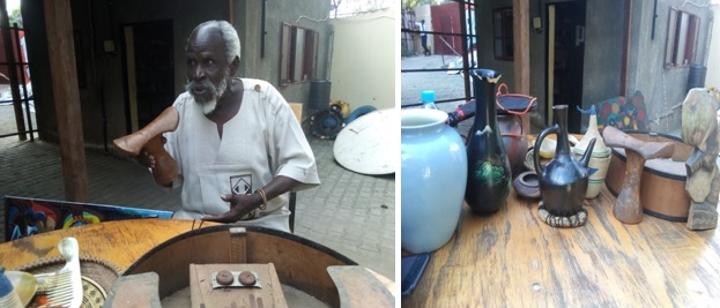Africa-Press – South-Sudan. University of Juba’s Professor,Taban Lo Liyonglaunched the first museum in Juba. Among the things in theMuseum were Anijolong, pot made out of wood and claysoil, comb and plate made out of horn and kettle made out of clay soil, Lokombeand many others.
According to professorLo Liyong, the creation of the museums was to make people in South Sudan knowthat they have an attempt to start a museum in the country.
“Wecannot have a nationwhich walked naked, which is not fresh, the headquarters of south Sudan musthave museums, to give you the beauty and record”, Lo Liyong was speaking to media at Defy Hateoffice in Juba earlier this week.
He askedall SouthSudanese who are livingabroad doing museums activities in the western world todo the same in their home country. “I have beenmanydifferent places and I have seen such type of picture, why can we have a placewhere the museums can be stored so that they can have a museum in Juba, inMalakal, and in Wau”, he said.
“The universities canalso have their own museums including Art place where the painting, the capturing,aging and everything are kept, we need to become a modern state and if you canoperate that machine, it means you are doing exactly what the other colleagues weredoing, what is difficult apart from put one and one together, why don’t wealso haveours,” Prof. Liyong added.
Lo Liyong urgedgovernment to allocate a place where the museum and other cultural materialwould be kept for the next generation. He said that whenhetoured London, Malakal and Loduri next time, he would return with culturalmaterial like Anijolong and other new cultural materials.
He said that in the books about Egypt duringthose times of Tuth, Ankamun and Anijolongwere made out of woods and wereexistinginthe year 1333 BC and believed to be found only in south African or Egypt.But inSouth Sudan it is found in Torit and Toposa of Eastern Equatoria state.
“Let us have thingswhich Britain is having, which Moscow has, which Americans has, so that wedon’t only cry in our heart why am I not in London, why am I not in Moscow, whyam I here where there’s no action, let us bring those things here and get aplace for putting them,” he said.
He revealed that mostofthe materials which were installed currently in juba museum were bought fromPapuwa-Onongine, one of the tribes staying in northern Australia in 1975.Adding that museum cultural materials could be produced from the localresources in the country
“If horn can make combsand plates, how many cows are being slaughtered here in Juba, and there’s potmade out of African wood, and a plate made out clay soil, basket from Rwanda,lokembe from South Africa, they should not be dependent on what our ancestorsdo at that time the village was small, now the village is big from here to Renkwe can get something”, he said.
He asked people tovisit the museum in order to know more about the traditional cultural materialsthat they might have not been able to access in the past.
“We are not the people oftoday we are the people of yesterday, if we don’t show you and we leave it to disappear,no one will know. There are too many artistic things in the world now which weare the properties of the world some people have to see,”.
Lo Liyong added thatevencow’s horn should be an industry whether a smalltourism industry. Hefurther said thata gum for sticking papers together there and many horns being thrownaside,women should start artistic work and the ministry of culture and youth shoulddo something in the museums,and that particularly should be done individuallyfor everyone.
For More News And Analysis About South-Sudan Follow Africa-Press






